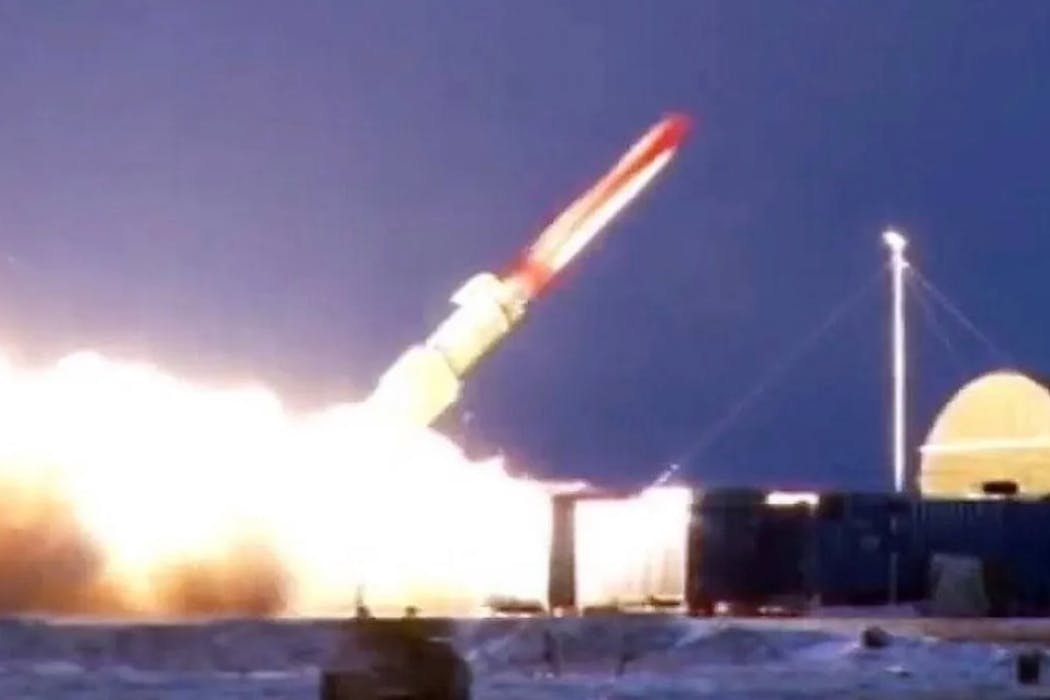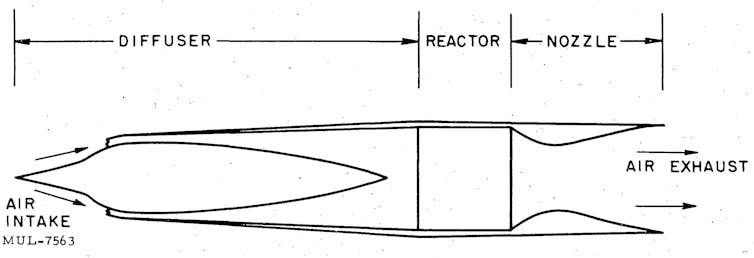Nuclear-powered missiles: An aerospace engineer explains how they work – and what Russia’s claimed test means for global strategic stability
- Nuclear-powered missiles, like Russia’s Burevestnik, are a type of cruise missile that use fission of nuclear fuel to generate thrust, offering significant advantages over conventional missile systems.
- The key advantage of nuclear-powered flight is the extra energy it provides, allowing missiles to fly farther, longer, faster, and lower in the atmosphere, making them challenging to defend against.
- The development of nuclear-powered missiles poses significant challenges, including the need for materials that can withstand extremely high temperatures, concerns over radiation contamination, and the risk of accidents during storage or launch.
- The Russian military’s claim that the Burevestnik missile flew 8,700 miles at low altitude over a 15-hour period highlights its potential to disrupt global strategic stability, as it could potentially bypass antimissile and air defense systems.
- The announcement of Russia’s nuclear-powered missile has significant implications for global power dynamics, as it could upset the current balance of power and potentially lead to a new era of nuclear deterrence or even conflict, highlighting the need for careful consideration and diplomacy to mitigate these risks.

Russian President Vladimir Putin, dressed in a military uniform, announced on Oct. 26, 2025, that Russia had successfully tested a nuclear-powered missile. If true, such a weapon could provide Russia with a unique military capability that also has broader political implications.
The missile, called Burevestnik, was reportedly successfully tested over the Arctic Ocean after years of development and several earlier initial test flights, one of which resulted in the deaths of five nuclear scientists.
I am an engineer who studies defense systems. Here is how these weapons function, the advantages they present over conventional missile systems, and their potential to disrupt global strategic stability.
Conventionally powered missiles
Missiles have been used by militaries around the world for centuries and come in a broad array of designs that are characterized by their mission, range and velocity. They are used to damage and destroy a wide variety of targets, including ground installations such as bases, command centers and deeply buried infrastructure; ships; aircraft; and potentially spacecraft. These weapons are operated from the ground by the army, from the sea by navy ships, and from the air by fighters and bombers.
Missiles can be tactical, with relatively short ranges of less than 500 miles, or strategic, with long ranges of thousands of miles. Missiles fall into three general categories: ballistic, cruise and hypersonic.
Ballistic missiles are launched on rockets. After the rocket burns out, the missile flies along a predictable arc that takes it out of the atmosphere into space and then back into the atmosphere toward its target.
Cruise missiles have an additional engine that is ignited after the rocket burns out, allowing the missile to fly programmed routes, typically at low altitudes. These engines are powered by a mixture of chemicals or a solid fuel.
Hypersonic missiles fly faster than the speed of sound, but not as fast as intercontinental ballistic missiles, or ICBMs. They are launched on smaller rockets that keep them within the upper reaches of the atmosphere. A hypersonic glide vehicle is boosted to high altitude and then glides to its target, maneuvering along the way. A hypersonic cruise missile is boosted to hypersonic speed and then uses an air-breathing engine called a scramjet to sustain that speed.
How nuclear-powered missiles work
Nuclear-powered missiles are a type of cruise missile. The designs are typically a form of scramjet. A thermal nuclear system uses fission of nuclear fuel to add energy to an airstream that is then accelerated through a nozzle to generate thrust. In this way, fission of nuclear material replaces chemical combustion of traditional cruise missile engines.

Lawrence Berkeley National Laboratory
The energy density – the amount of energy released per unit mass of fuel – available from nuclear fission is millions of times larger than that released by chemical propellants. This feature means that a relatively small amount of fissionable propellant can be used to power a missile for much longer periods of time than chemical propellants can.
The United States explored developing a nuclear-powered missile in the 1960s. The effort, Project Pluto, was abandoned due to the rapid progress made at the same time on ICBMs, as well as concerns over environmental contamination associated with nuclear systems.
Advantages of nuclear-powered flight
The key advantage of nuclear-powered missiles is the extra energy, which allows them to fly farther, longer, faster and lower in the atmosphere, while executing a wide array of maneuvers. For these reasons, they pose a significant challenge to the best missile defense systems.
The Russian military claims that the Burevestnik missile flew 8,700 miles at low altitude over a 15-hour period. For comparison, an airline flight from San Francisco to Boston covers 2,700 miles in six hours. While the Burevestnik vehicle is not flying particularly fast for a missile, it is likely maneuverable, which makes it difficult to defend against.
Challenges to using nuclear power
The huge amount of energy released by fission has been the key technical challenge for developing these missiles. The high levels of energy require materials that can withstand temperatures up to several thousand degrees Fahrenheit to prevent the missile from destroying itself.
In terms of safety, nuclear technology has found very limited application in space due to concerns over radiation contamination if something goes wrong, such as a failed launch. The same concerns apply to a nuclear-powered munition.
In addition, such systems may need to remain safe in storage for many years prior to use. An attack by an enemy on a weapons storage facility that contains nuclear-powered weapons could lead to a massive radiation leak.
Russia’s Burevestnik and global stability
The new Russian Burevestnik missile has been under development for over 20 years. While few technical details are known, Russian officials claim that it can maneuver to bypass antimissile and air defense systems.
Nuclear weapons were the basis for mutual deterrence between the Soviet Union and the United States during the Cold War. Both parties understood that a first strike by one side would be matched by an equally destructive counterstrike by the other. The fear of total annihilation maintained a peaceful balance.
Several developments threaten the current balance of power: better missile defense systems such as the U.S.’s planned Golden Dome and advances in highly maneuverable missiles. Missile defense systems have the potential to block a nuclear strike, and low-altitude maneuverable missiles have the potential to arrive without warning.
So, while much of the reaction to Russia’s announcement of its new nuclear-powered missile has focused on the challenges of defending against it, the more important concern may be its potential to completely disrupt global strategic stability.
![]()
Iain Boyd receives funding from the U.S. Department of Defense.
